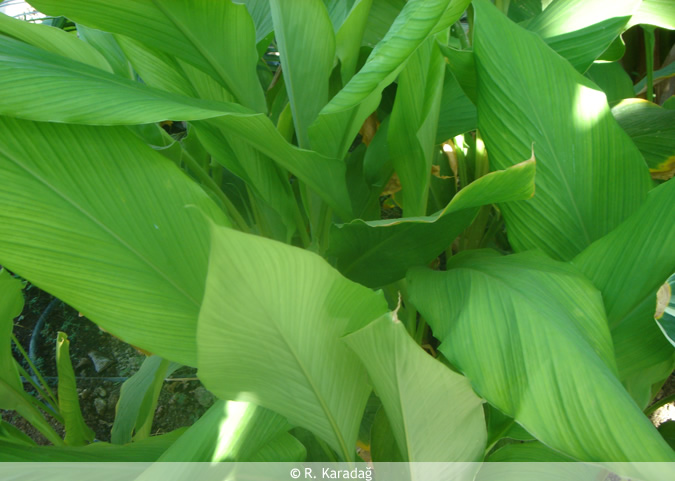Curcuma or tumeric is a perennial shrub about three feet high with large lancet-shaped leaves and yellow flowers. The roots thicken to a rhizome from which secondary rhizomes develop. Distribution: The tropics and subtropics from Africa to India , Sri Lanka , Indonesia , and southern China . The probable origin is East Asia . Material used for dyeing: The rhizomes, fresh or dried.
Historical Data
Curcuma (turmeric) is a very old cultivated plant and the rhizomes are an old trading product. Powdered curcuma root was even imported into the Roman Empire .Turmeric ( curcuma longa ) a native to India and China, is sometimes called Indian saffron plant. Turmeric is used as a coloring agent. Silk and wool were dyed with turmeric powder in Asia, Greece and Rome. It also has been used as a dye to deepen the colour obtained with fustic or weld. In the orient a scarlet color was produced by dyeing first with turmeric and then over dyeing with a dye made from safflower. Turmeric is still exported from the countries that produce it, mainly for use as a dye for foodstuffs, cosmetics, paper, and leather. In the countries of origin, it is still used as a textile dye, which as a direct dye can be painted on finished textiles. The yellow on warp-faced cotton cloths from Sumba in Indonesia has generally been painted on with curcuma. In addition to Curcuma domestica, there are other species that are cultivated, e.g., Curcuma xanthoriza ROXB. On Java and in southern China .

